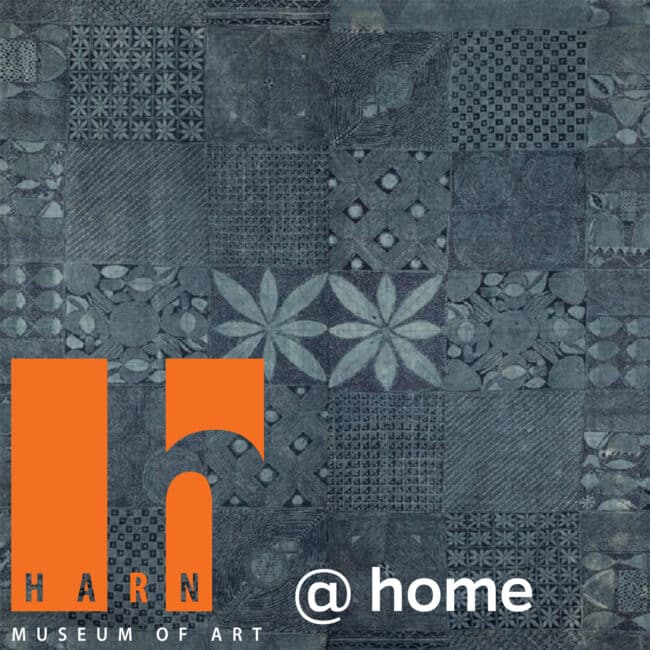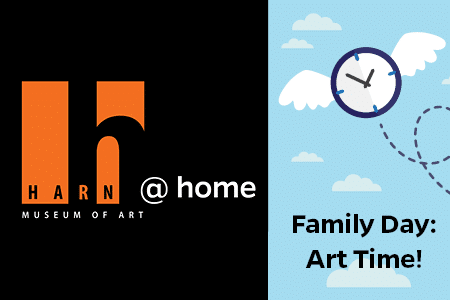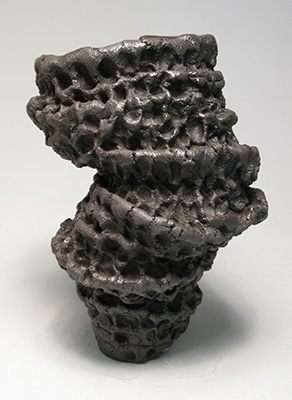Learn about the geometric and symbolic designs of Tŏk Sal, on view in the exhibition Everyday to the Extraordinary: Highlights from the Korean Collection, then follow the instructions to learn how to make extraordinary molds from everyday materials.
What You’ll Need
- Cardboard
- Ruler
- Scissors
- Pencil or pen
- Hot glue
- Airdry clay, model magic, or playdough
- Rolling pin
- Recommended materials: Mod Podge, paintbrush, water cup
What You’ll Do
1. Measure and cut two strips of cardboard to approximately 6 inches long by 2 inches wide.
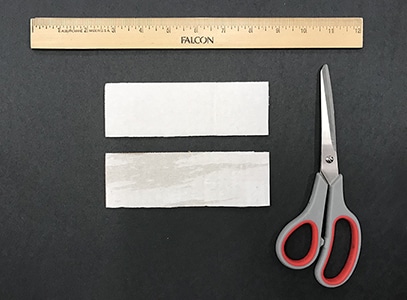
2. With hot glue, attach one cardboard strip on top of the other (like a hot glue sandwich) to form a sturdy base for your mold.

3. Drawing inspiration from the Tŏk Sal, sketch the design of your mold with a pencil or pen onto the cardboard base.
- Notice how the designs of the rice cake molds are divided into sections, alternating the geometric patterns and the symbolic imagery.
- Tip: Use a ruler to divide your design into sections.
- Think about symbols and what they mean to you. For example, the sun can represent life or happiness, a pawprint can mean care or companionship, and an apple can symbolize health or fruitfulness.
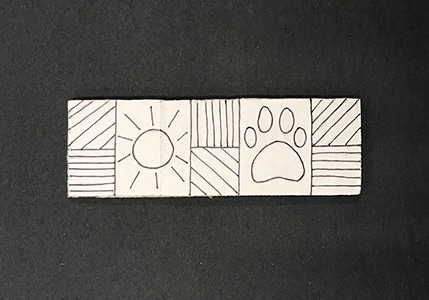
4. Using your drawing as a guide, carefully follow the lines of your design with the tip of the hot glue gun to create even lines of glue on the surface of the cardboard.
- Tip: Rest the tip of the hot glue gun on the cardboard and drag the glue across the surface to maintain greater control over the direction of the hot glue.
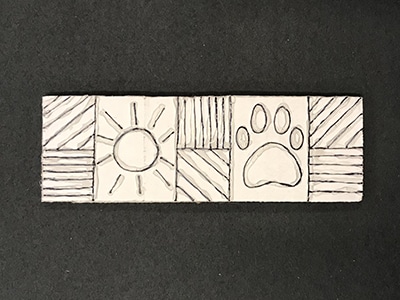
- Tip: Using the recommended materials, brush a layer of Mod Podge over the entire surface of the mold to seal the cardboard. This will make your mold more durable and water-resistant so that you can use it on multiple occasions. The sealer will act like the sesame oil used to coat rice cake molds.

5. With your fingers or a rolling pin, flatten a piece of airdry clay, model magic, or playdough to fit the size of your mold.
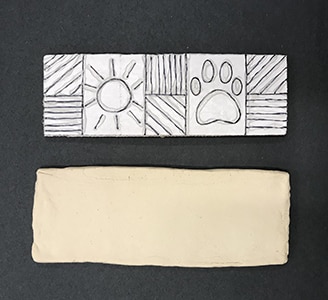
6. Press the mold onto the clay/dough.
- Tip: Allow the clay to harden slightly before pressing it onto the mold to prevent the clay from sticking to the mold. This will allow the clay to hold its shape and the mold’s design more easily.
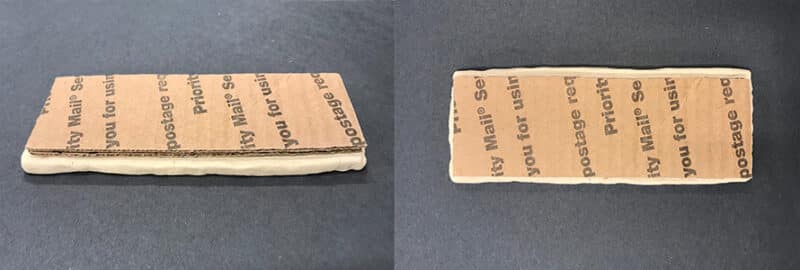
7. Pull the mold away from the clay/dough to reveal the transferred design.
- Notice how the raised lines of hot glue on your mold became grooves in your clay/dough. Feel the difference in texture. Do you prefer the appearance and texture of your mold or your clay/dough creation?
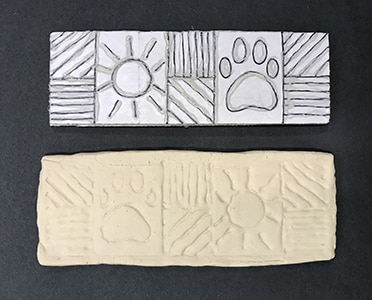
Try This!
- Explore your home, the outdoors, or other locations to find objects with textured surfaces. Experiment with pressing the objects into playdough or clay. How can you combine those textures to create a design on the dough or clay?
- What kitchen utensils can you use to press a design onto an edible dough, such as cookie dough?
Object Connections:


Thoughtfully carved out of wood, these Korean rice cake molds feature geometric patterns and symbolic imagery. Sections of horizontal, vertical, and diagonal lines alternate with sections of decorative symbols, such as chrysanthemums, which symbolize longevity, and fish, which represent prosperity. When the rice cake mixture is pressed into the mold, the wishes for wellness that are carved into the molds’ design are transferred to the rice cakes. In addition to obtaining these messages, rice cakes become aesthetic objects like the molds themselves. Wood carving and culinary arts merge within the making of Korean rice cakes, or tteok, to create artistic and edible objects that express culture, convey meaning, and showcase design.
Lesson Plan by Sarah Bass, Family Programs Intern and 4th-year Art and Art History major in UF’s College of Art School of Art and Art History.

